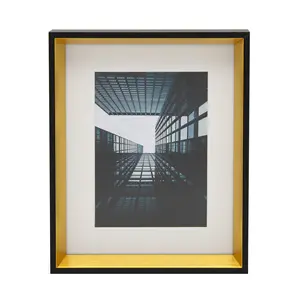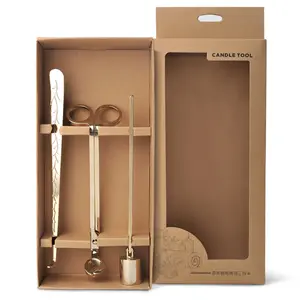Popular in your industry
































































































 Ready to Ship
Ready to Ship


































































 Ready to Ship
Ready to Ship





Top categories
About hanging frames
Introduction
Step into the transformative world of hanging frames, a dynamic and versatile tool that can redefine your living space. More than just decorative elements, hanging frames or gallery walls, mirror your personality, narrate a story, and serve as a strategic design tool that can balance and amplify the aesthetics of any room. This article will guide you through the journey of revamping your space with this artful decor technique, exploring the types of frames, the significance of size, color, material, and texture, and how to create a balanced layout with these frames. Let's embark on this exciting journey to transform your space into a visual delight.
The Power of Hanging Frames
Gallery walls, also known as hanging picture arrangements, are a potent tool to enhance the personality and visual interest of any room. The secret to a successful arrangement lies in creating a balanced profile that draws the eye in, maintaining appropriate spacing between frames, and choosing a color scheme that complements the displayed images. The arrangement can narrate a story, reflect your character and lifestyle, and even balance an awkward room layout. This trend continues to grow in popularity, with numerous themes and styles to choose from.
Types of Hanging Frames
Hanging frames come in various types, each with unique characteristics. Standard frames, typically made from wood and glass, offer a classic design suitable for any decor. Gallery frames, often made from wood or metal, give photos an artistic feel. Floating frames create an optical illusion, adding visual interest to your space. Deep-set frames, set back into the wall, save space without sacrificing style. Decorative frames, with intricate designs, add elegance to your room. Collage frames allow you to combine various images into one larger picture. Poster frames are perfect for displaying large posters, while document frames are designed for showcasing important papers. Tabletop frames add style to your visible spaces, and modern frames keep your photos looking crisp and clean.
Selecting the Right Frames for Your Space
Selecting the right frame for your space involves considering the material and color of the frame. Wood frames offer a traditional look, complementing paintings and photographs with warmth and detail. Metal frames, on the other hand, provide a modern aesthetic, subtly enhancing displays with a crisp finish. The choice between wood or metal can also be influenced by your interior design style. Frame color is another crucial aspect. You can choose a color from the picture, go for a dramatic effect with an opposite color, or opt for a neutral frame. Remember, the frame should complement both your artwork and your space.
Significance of Frame Size and Color
The size and color of your hanging frames can significantly impact the perception of your space. Lighter and cooler colors make the space appear larger, while darker colors can make it seem more compact and cozy. The arrangement of colors or textures can also change the perspective, making the room appear taller, longer, wider, or highlighting a particular element. For instance, to highlight a wall, keep it a lighter color while others have a darker tint. This draws the eye to it. Similarly, if you want to make the walls appear shorter, apply a darker shade to the bottom of the wall.
The Role of Material and Texture
The material and texture of hanging frames play a crucial role in their visual appeal. Visual texture, the perceived surface quality of an object, can enhance the appeal of a display. For instance, the use of wood or metal can give a display an industrial look, while felt or vinyl can provide a softer aesthetic. Tactile texture, the actual feel of a surface, can make a part of a display stand out. Natural textures originate from nature, while artificial textures are man-made. Each texture can enhance a display when used appropriately.
Creating a Balanced Layout with Hanging Frames
Creating a balanced layout with hanging frames involves a few key considerations. If you're hanging more than one picture on a wall, aim for the 2/3 rule. Your collection of artwork should be 2/3 the size of the object you're hanging it near, such as a couch or cabinet. This measurement can be determined by measuring your furniture, dividing the result by three, and then multiplying by two. This will give you an idea of how much space your gallery wall should occupy, helping to create a balanced and visually appealing layout.
Single vs. Gallery Wall Approach
Gallery walls are a timeless design element that can be styled to appear minimalist or to showcase a collection of items. They have their place and time, and the best gallery walls are always evolving. Whether you choose a single frame or a gallery wall approach depends on your personal style and the space you're decorating. Gallery walls can help you display a variety of frames in a cohesive and visually appealing way.
The Rule of Thirds in Frame Placement
The rule of thirds is a design technique that can be effectively applied to frame placement. It involves dividing a space into a three-by-three grid, with the intersecting points serving as focal points for positioning elements of interest. This technique can be used to create a perfectly balanced layout with hanging frames. For instance, placing frames at the intersecting points of the grid can lead to a visually pleasing arrangement. It's a tool for creating or checking balance in design, especially when thinking about views and spatial composition.
Maintaining and Cleaning Your Hanging Frames
Maintaining and cleaning your hanging frames is essential for their longevity. Regular care with a microfiber cloth can keep dust and unwanted particles at bay. For stubborn dirt, a damp cloth can be used, but avoid applying water directly to the frame. Be mindful of where you hang your frames; areas with high humidity or changing temperatures can cause warping. Regular checks for signs of bowing or warping can help ensure your frames stay in prime condition.
Conclusion
In conclusion, hanging frames are a potent tool to elevate the aesthetics of your space. They offer a unique blend of personal expression and strategic design, allowing you to tell a story, reflect your character, and balance your room's layout. The choice of frame type, material, color, and texture plays a significant role in defining the visual appeal of your space. The art of creating a balanced layout with hanging frames, whether you opt for a single frame or a gallery wall approach, can be mastered with the 2/3 rule and the rule of thirds. Regular maintenance ensures the longevity of your frames, keeping your space vibrant and engaging. Embrace the art of decorating with hanging frames and transform your space into a reflection of your personality and style.












































































